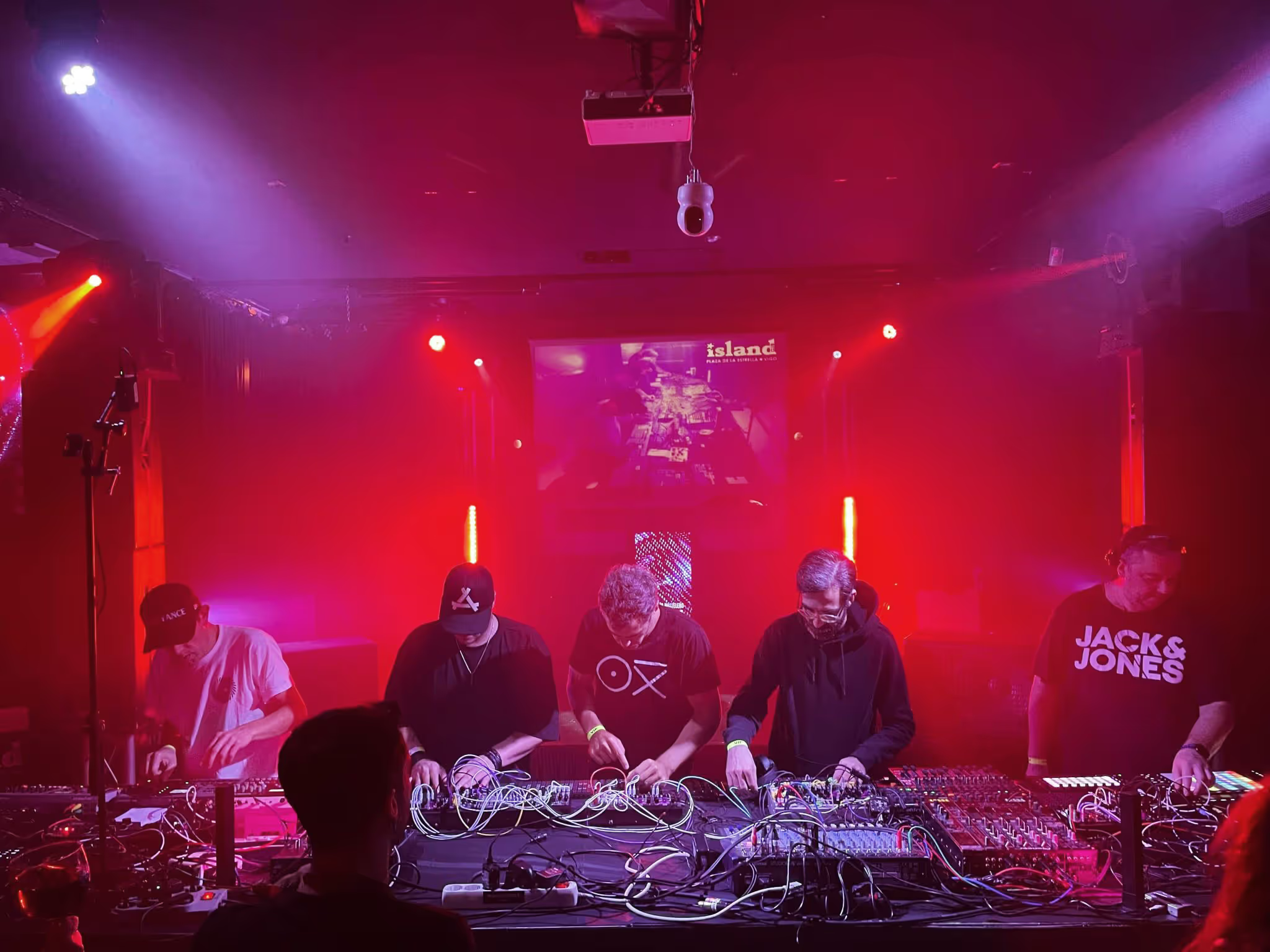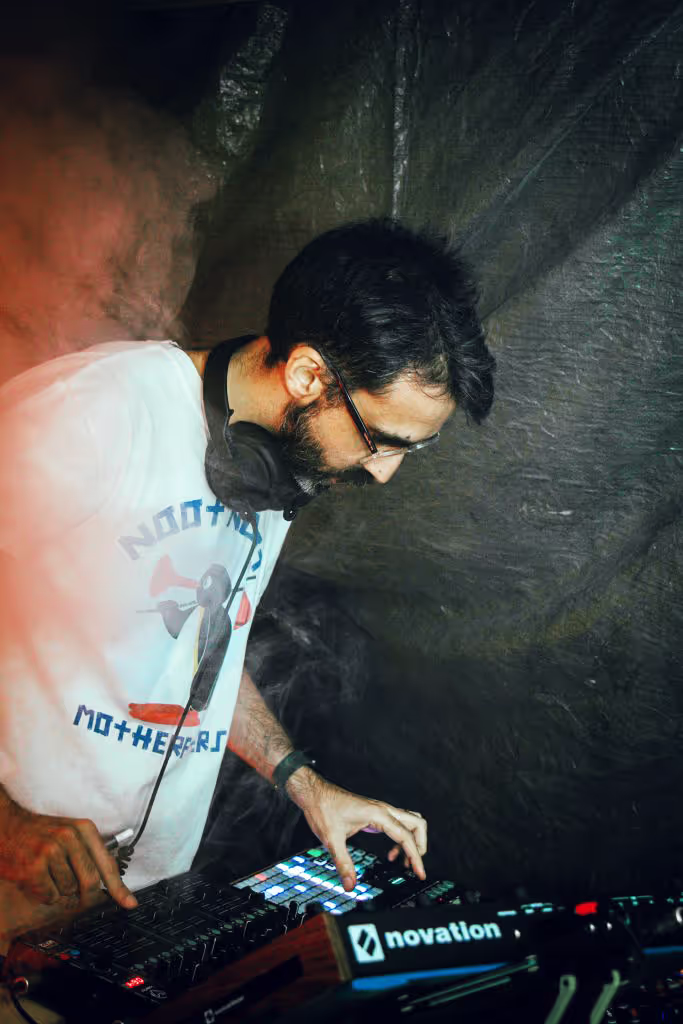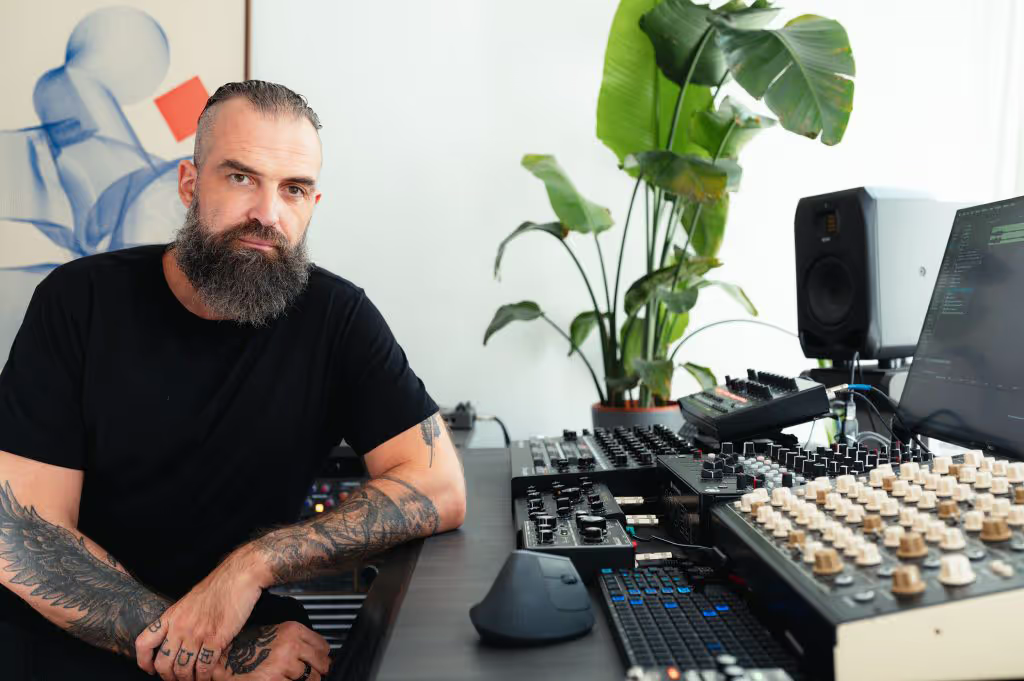
At OXI, when we design our products, playability and live performance are always fundamental elements—whether on stage or in the studio.
Live performance can take many forms, from an intimate jam session to a full-scale concert, but at its core, it’s about infusing your creations with a human touch. Use your hands, embrace imperfections, and let those small mistakes become part of the music’s character. As AI continues to rise, artists are increasingly seeking ways to make music feel more organic, raw, and expressive. Jamming is one such approach.
In this article, we asked our dear friends Oora and A Thousand Details to share their key reasons for embracing live jamming and performance in their creative process.

For me jamming is the way I do music at the studio and how I play live. All my creations are improvisations in a way. This is very important to me, because it allows me to not fall into formulas and repeat over and over the same ideas. And of course, it’s fun, unpredictable and magical from my own experience and amusement.
OXI Instruments plays a super important role in my music creation. OXI One is the ‘brain’ of my studio setup, and when I play live, it’s where everything begins—it feeds my instruments, keeping everything in motion. I create all my melodies on it, and it’s the place where all things clocking happens. Plus it’s great fun to use as a modulation source adding more musical motifs to my music.
Recently I’ve added an OXI Meta to my small Intellijel Palette 62hp case for live performance. At the studio there’s always a Meta at the end of a chain because it allows me to do breaks and drops easily, something that my music needs often as it’s one key component for Techno Music. That’s why OXI is integral to my music creation. The portability of these tools—whether it’s OXI One, the convenience of traveling with two OXI Corals as a full polyphonic voice, or the Meta simplifying and enhancing my workflow—makes the process both easier and more enjoyable. At the same time, their depth ensures I never fall into the trap of repeating ideas.

Coming from a touring metal band, the performing factor in music has always been one of my first concerns. When first approaching electronic music, I wanted to find a way to create a workflow that allowed me to compose and improvise in real time, something I was able to do on a guitar and with singing.
I fell upon simple instruments such as the vintage Roland boxes, with intuitive controls to shape sounds easily, and mixers used as instruments, which allowed me to add multiple layers to my performances.
Next in line was the search for the perfect tool to translate my ideas into a language my machine could understand. This language is MIDI and Control Voltage, and the tool is the sequencer. I tried countless options and initially relied heavily on the X0X-style sequencing found in Roland’s drum machines and Elektron boxes. But later on, I needed something more complex to create harmonic progressions, harmonizations, arpeggios, and beyond.
That’s when I discovered OXI One. Since then, it has become my main writing tool, and most of my records start from a live jam with it. Most of the time, I record live performances—sometimes just a stereo take from my mixer and call it a day. I sequence everything with OXI One, generally setting four-bar loops with lots of variations. I use conditional trigs and decoupled modulation lanes extensively. The sequencer takes care of the orchestration so I can focus on shaping the sound.
I treat my synths like classic instruments. My Vermona Perfourmer, for example, lets me dial in a lot of nuances with my hands, and that’s where I find my happiness. I establish a connection with my tools and have a conversation with them. Moreover, OXI One allows me to quickly create variations and new patterns on the fly. The harmonization feature is a game-changer—it’s amazing to put down a few trigs and then harmonize them with chords to create new ideas effortlessly.
Finally, approaching production with a performance mindset saves you from the decision paralysis that often comes with in-the-box creation and arrangement. I like to commit to my performance because that’s what I look for in other artists as well—their most raw and honest message.
We want to thank A Thousand Details and Oora for their time, and being part of the big OXI Instruments family of artists! May their insights spark new ideas, push your creativity further, and open doors to unexplored techniques. Keep experimenting, keep playing—until next time!